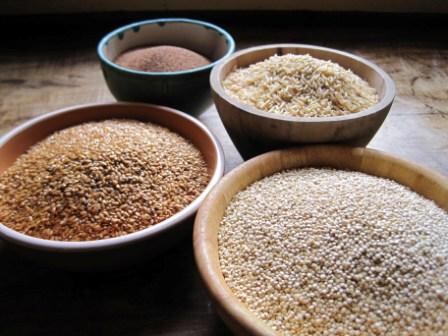Speaking to FoodNavigator-USA for our free-from products special, marketing manager Jennifer Stephens said that gluten-free formulations have traditionally focused on white rice flour accompanied by starches and gums to replace the technical function of gluten, improve moisture retention and cell structure, and tackle the crumbly texture dogging many early formulations.
Using sorghum in gluten-free formulations

However, firms are now increasingly keen to incorporate whole grain flours and more nutritionally dense ancient grains to liven up recipes and improve the fiber, protein and vitamin and mineral content of gluten-free products, which has frequently been criticised by nutritionists, said Stephens.
“We’re seeing a lot of interest in gluten-free whole grain flours of all kinds, especially sorghum, teff and also hemp, which can be denser and require different starch and gum systems.
“Also, some of the whole grain flours don’t actually have that much fiber, so companies also want to add fiber from other sources into whole grain gluten-free formulations as well.
“Sorghum is definitely a big one, but it can give off a bitter taste, so customers are having to work on masking that in some recipes.”
Novel technologies to stop starch staling could transform the market
Meanwhile, customer demands for clean-labels are also increasing the technical challenges, with some clean label formulations precluding the use of dough conditioners, modified starches and preservatives that can significantly improve texture, appearance and shelf life of gluten-free baked goods.
This makes clean-label products particularly susceptible to starch retrogradation (staling), further affecting shelf-life, she added.
“We’re working on new technologies that slow down the retrogradation or staling of starches, which could ultimately mean that the products don’t have to be frozen, but we probably won’t be in a position to launch anything until next summer.”
Gluten-free naans and pittas
As more customers are experimenting with ancient grains and other ingredients in gluten-free, they are also expanding into new product areas such as gluten-free naans, pittas and other speciality and ethnic breads, said Stephens.
“We’re also getting more requests for extruded snacks, cereals and other products, but also a lot more requests from foodservice companies.”
So how has the quality of gluten-free products changed in recent years?
From a sensory perspective, it has come on “leaps and bounds”, said Stephens. However, some product areas remain very challenging, including certain pastries, donuts and more indulgent products.
